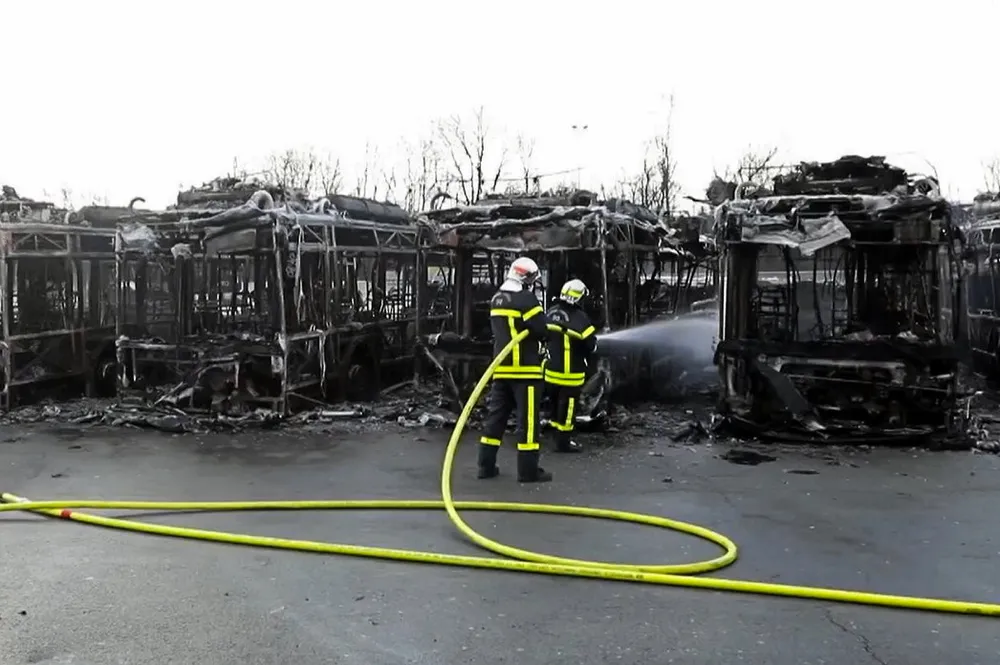Fire that destroyed seven hydrogen buses 'not caused by H2' — region will move ahead with fuel-cell bus expansion plan
Belfort transport authority boss says an unexplained electrical fire on one bus spread to six others in the early hours of 2 January

The Belfort region of northeast France will continue its plan to expand the use of hydrogen buses in its territory, despite a devastating fire in the early hours of 2 January that burned all seven fuel-cell buses in its fleet.
Yannick Monnier, director of the Belfort Territory Transport Authority (RTTB), said that while it is still too early to draw “definitive conclusions” about the cause of the blaze, “what we do know is that the fire is not related to hydrogen or its use”.
“The fire started on a single bus, before spreading to other vehicles parked nearby,” he told French sustainable transport website Mobily-Cités.
“Initial analyses indicate that it was an electrical fire, but it remains to be determined what equipment overheated or deteriorated to trigger this incident. We are eagerly awaiting the experts’ results to better understand [what happened].”
“We remain convinced that hydrogen has its place in the mobility of the future,” he said. “Belfort has made the strategic choice to invest in this technology, with the objective that 50% of our fleet will be made up of hydrogen buses.
“These vehicles offer exceptional autonomy, up to 400 kilometers, which is essential to cover the long routes of our network.
“The fire does not call into question the relevance of hydrogen, especially since the electrical origin of the incident could have occurred on any other type of bus, including electric.”
Fuel-cell electric vehicles all contain a battery — which could have been the cause of this fire — for several reasons, including to smooth out power delivery to the electric motor, to capture and store energy from regenerative braking and to start up the vehicle.
“This incident is a reminder of the technical challenges posed by any new technology, but it must not slow down the development of hydrogen in transport,” Monnier told the website.
“We remain committed to building sustainable mobility by combining safety, innovation and energy diversification to meet the needs of our users and the imperatives of the ecological transition.”
The territory of Belfort is a French department that includes the city of Belfort and the surrounding areas. The fire occurred in the commune of Danjoutin, a suburb of Belfort city.